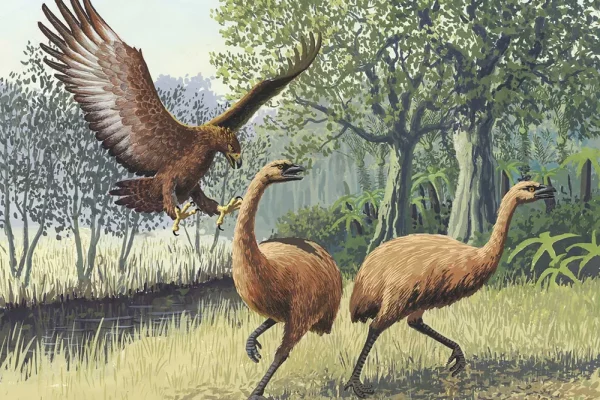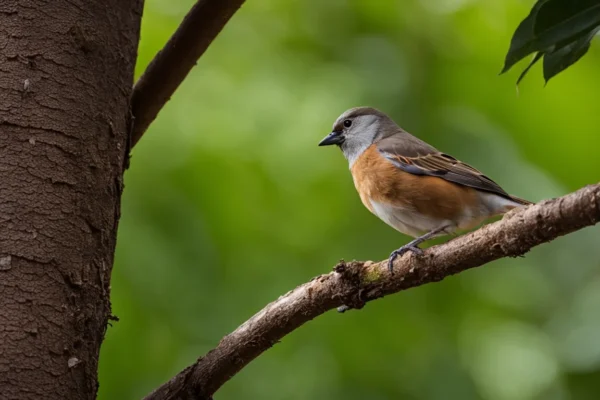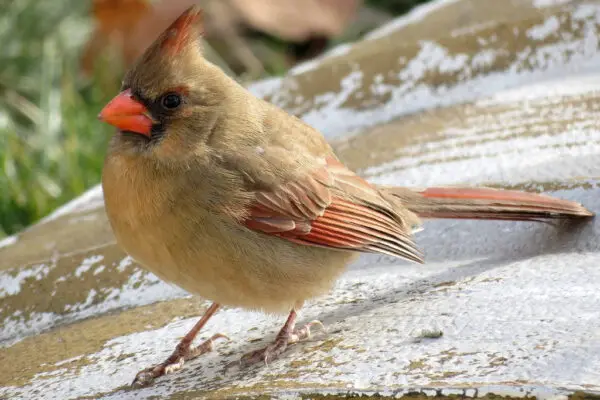People have been enthralled by cuckoo birds’ unusual nesting habits for generations. Here’s the short response in case you’re pressed for time: Yes, a behavior known as brood parasitism occurs when cuckoo birds deposit their eggs in the nests of other bird species.
The female cuckoo abandons raising her young to another bird by taking one egg from the host’s nest and replacing it with her own.
This in-depth essay will examine the fascinating world of the cuckoo bird and explain how and why it uses other birds as a breeding ground for its offspring. We’ll examine the incredible adaptations that enable cuckoo chicks to outcompete their nestmates, the strategies mom cuckoos use to avoid being discovered, and the ways in which some host birds respond to this deceit.
You will have a complete grasp of one of the most intriguing and crafty survival techniques found in nature at the end.
An Overview of Cuckoo Bird Brood Parasitism
A intriguing trait seen in certain bird species, such as cuckoos, is called brood parasitism. By doing this, the cuckoo birds effectively fool other bird species into caring for their young by hiding their eggs in their nests.
Scientists and bird lovers alike have been fascinated by this behavior, which has prompted a great deal of investigation and study.
Definition and frequency of parasitism in broods
The act of depositing eggs in the nests of other bird species, known as “brood parasitism,” enables the parasitic bird to evade the duties of incubating and rearing its own young. There are several cuckoo species that exhibit this behavior more than others, including the common cuckoo (Cuculus canorus).
Nevertheless, brood parasitism is also seen in other bird species, including several finch species and cowbirds.
In the world of birds, brood parasitism is a somewhat widespread practice. Research indicates that as many as 1% of all bird species participate in this activity to some degree. Nonetheless, various bird groups and geographical areas have differing rates of brood parasitism.
While certain bird species are more susceptible to parasitism, others have developed protections against it.
Some species of cuckoo that engage in brood parasitism
The common cuckoo is perhaps the most well-known cuckoo species that engages in brood parasitism. These birds, which are distributed across Europe, Asia, and Africa, are very good at mimicking the look of their host bird species.
By imitating its host, the cuckoo eggs may become less noticeable by blending in with their eggs.
The African cuckoo (Cuculus gularis) and the Oriental cuckoo (Cuculus optatus) are two more cuckoo species that display brood parasitism. Every one of these species has developed special adaptations and techniques for invading host nests.
How the cuckoo benefits from cuckoo parasitism
Cuckoo birds have various benefits from being parasitized by their brood. Cuckoos may save energy by depositing their eggs in other birds’ nests rather than having to incubate and raise their own offspring. They are able to focus more attention on their own survival and procreation as a result.
In addition, cuckoo eggs’ mimicry contributes to their survival. If the cuckoo eggs resemble those of their own species, the host birds are less likely to destroy or expel them. This makes it more likely that the cuckoo eggs will hatch and that the host bird species will nurture them.
It is crucial to remember that there are hazards associated with brood parasitism for cuckoos. The cuckoo may ultimately lose its reproductive investment if host birds discover and reject its eggs.
Furthermore, certain host species have developed defense mechanisms, such the ability to identify and eliminate alien eggs from their nests.
The Way Cuckoos Infest Nests
When it comes to procreation, cuckoo birds are infamous for acting like parasites. Cuckoos have evolved a cunning plan to deceive other bird species into caring for their young instead of building their own nests and depositing their own eggs.
Scientists have long been captivated by this behavior, which is referred to as brood parasitism.
The choice of nest and the species of target host
When it comes to picking which nests of other bird species to parasitize, cuckoos are highly picky. Usually, they go for smaller kinds of birds that can’t properly protect their nests. This contains birds like meadow pipits, dunnocks, and warblers.
Cuckoos keep a close eye on these birds and choose the best nests based on features such as host egg presence, nest location, and nest construction.
Egg emulation and extraction of host eggs
The capacity of cuckoo parasites to imitate the eggs of their preferred host species is one of the parasitism’s most intriguing features. Because cuckoo eggs often mimic host bird eggs, they might be overlooked.
Cuckoos may even replicate the size, color, and pattern of the eggs laid by their host species. The cuckoo egg usually hatches before the host eggs, which gives the cuckoo chick an advantage in getting resources and parental care early on.
It is also known that Cuckoos remove host eggs from the nest in order to provide all the resources and care to their own young. It is thought that this behavior is an adaptation meant to lessen rivalry inside the nest for food and care from the parents.
Egg laying timing in relation to host clutch
Cuckoos have developed the capacity to time the size of their clutches of eggs to correspond with the host species of their choice. By doing this, it is certain that the host bird won’t discover any more eggs inside the nest. Depending on the stage at which the host eggs mature, cuckoos may either advance or postpone the laying of their eggs.
They are able to effectively incorporate their eggs into the host’s clutch without raising any red flags because to their amazing capacity.
Scientists have examined cuckoos’ interesting behavior and capacity to parasitize nests in great detail. You may find in-depth study papers and observations on nature.com to learn more about this subject.
Cuckoo Chick Strategies to Outgrow Young Host at a Fast Growth Rate
Cuckoo chicks use their quick development rate as one of their main tactics to outcompete the host young. It is well knowledge that Cuckoo chicks develop at an incredible rate, often outgrowing their host chicks in a matter of days.
As a result, there is less room for the host young to flourish and they are able to dominate the little resources that the host parents provide.
structural modifications
Additionally, the anatomical modifications that cuckoo chicks have gives them an edge over the host young. For example, their beaks are made especially to take food from the host parents, so they may make effective use of what’s available.
They also grow their wings more quickly, which allows them to fledge early and avoid danger from their host parents or other predators.
Aggressiveness toward the host children
Cuckoo chicks can utilize aggressive behavior against the host young as a technique. They will aggressively evict or even murder the host chicks in order to remove competition for resources. They often display dominance.
By acting in this way, the cuckoo chick increases its chances of survival by securing the host parents’ full attention and care.
Researchers have examined and recorded these cuckoo chick techniques in great detail. Go to reliable sites like National Geographic or the Audubon Society to learn more about this amazing phenomena.
Adult Cuckoos Avoiding Their Host’s Defenses
The capacity of cuckoo birds to circumvent host defenses while depositing their eggs in other birds’ nests is among their most remarkable characteristics. After generations of development, adult cuckoos have developed a number of fascinating methods as a consequence of this behavior.
Quick laying of eggs
The ability to lay eggs fast has been mastered by adult cuckoos, enabling them to swiftly lay their eggs in the nests of unwary host birds. They must deposit their eggs before the host bird notices them and rejects the alien egg, which is essential to their survival.
Certain species of CCKOOs have been reported to lay an egg in as little as 10 seconds, according to certain research!
The sleek and compact form of the cuckoo’s egg contributes to its very quick egg laying. This makes it possible to put it in the host nest with ease and without attracting undue attention. Cuckoos have also evolved an excellent sense of timing, allowing them to choose the ideal time to deposit their eggs when the host bird is temporarily preoccupied or gone from the nest.
Debris from host eggs removed
The cuckoo must take precautions to prevent the host bird from finding and taking the foreign egg out of the nest once it has successfully set its egg. Adult Cuckoos have devised a cunning plan to do this: they clear the nest of any trash or remaining host bird eggs.
The cuckoo lessens the possibility that the host bird will identify the alien egg and reject it by eliminating these traces. It is thought that this behavior, which has been seen in a number of cuckoo species, is an adaptation that improves the likelihood that the host bird would successfully raise the eggs.
Mafia retaliation in action
Scientists have discovered another fascinating characteristic in adult cuckoos: “retaliatory mafia behavior.” Sometimes an adult cuckoo may return to a nest after a host bird has removed a cuckoo egg and will destroy all the other host eggs in retribution.
The host bird is warned off by this behavior and is discouraged from removing any more eggs in the future. Additionally, it makes sure that the host bird’s attention is only on the cuckoo’s eggs, which improves the eggs’ chances of surviving.
It is important to remember that many host bird species have also evolved defenses to recognize and reject cuckoo eggs, even though cuckoos have evolved these amazing tactics to assure the success of their parasitic reproductive activity.
Cuckoos and their hosts are engaged in an ongoing evolutionary arms race that is shaping both species’ behavior and adaptability.
The Defenses and Counteradaptations of Host Birds
Rejection of Eggs
Hedgehogs’ primary defensive mechanism against Cuckoo birds is their capacity to identify and reject alien eggs from their nests. Egg rejection is the term for this action. Due to variations in size, color, and pattern, host birds have acquired the capacity to differentiate between their own eggs and those of the cuckoo bird.
This lowers the likelihood that they would raise a cuckoo chick at the cost of their own young by enabling them to remove the foreign eggs from their nests.
According to studies, certain host bird species are better than others at identifying and rejecting cuckoo eggs. One bird that has shown exceptional efficiency in recognizing and eliminating alien eggs from their nests is the reed warbler.
The strong co-evolutionary arms race between cuckoo birds and their host species is probably what led to the creation of this skill.
Nest Abandonment
Certain host bird species have evolved a second defensive mechanism known as nest desertion in addition to egg rejection. A host bird may decide to completely quit its nest and leave the cuckoo egg behind if it discovers that there is a cuckoo egg within.
This is an extreme, yet practical, method of preventing the raising of a Cuckoo chick.
Nest abandonment may have serious repercussions for the cuckoo bird as well as the host bird. The host bird interprets this as a loss of the time, effort, and materials needed to construct the nest and deposit its own eggs.
For the cuckoo bird, it represents the forfeiture of the chance to grow up with a host bird and maybe reap the advantages of growing up in a nest belonging to a different species.
Chick Turndown
Even after hatching and being reared by a host bird, a cuckoo chick still runs the danger of being sent away. Because of their look and behavior, certain host bird species have acquired the capacity to recognize and reject cuckoo chicks.
The host bird’s capacity to raise and feed its own young may be strained by the presence of a bigger, more demanding cuckoo chick in the nest. Because of this, the host bird may decide to reject the cuckoo chick in order to put its own young’s survival first.
A host bird may find it difficult to reject a chick since it means compromising one individual’s well-being for the sake of the group as a whole. To guarantee the host bird population’s longevity and ability to reproduce, it is a vital tactic.
To get further knowledge on cuckoo birds and their relationships with their host species, go to the Cornell Lab of Ornithology webpage at https://www.allaboutbirds.org/guide/brown-headed-cowbird/
Final Thoughts
Over millennia, cuckoo birds’ unique reproductive method has developed into a sophisticated ecological phenomena. Cuckoos improve their own fitness while placing a financial strain on their hosts by abandoning the responsibility of providing parental care to other species.
The arms race between cuckoos and their hosts offers intriguing insights into the realm of natural selection and survival of the fittest for students studying co-evolutionary biology.
Cuckoos have evolved morphological adaptations, cunning mimicry, and mafia-like retribution to enable them to take advantage of other birds in order to rear their young. However, in order to retaliate, hosts like crows and reed warblers have developed their own defenses.
Cuckoo tricks select for increased host resistance, which sets the ground for the emergence of progressively more advanced parasitic strategies. The outcome is an unending evolutionary cycle of host and brood parasite activity and counteraction.






